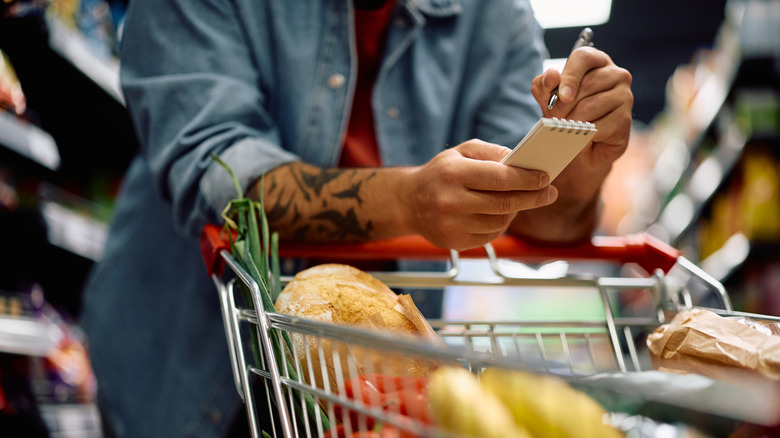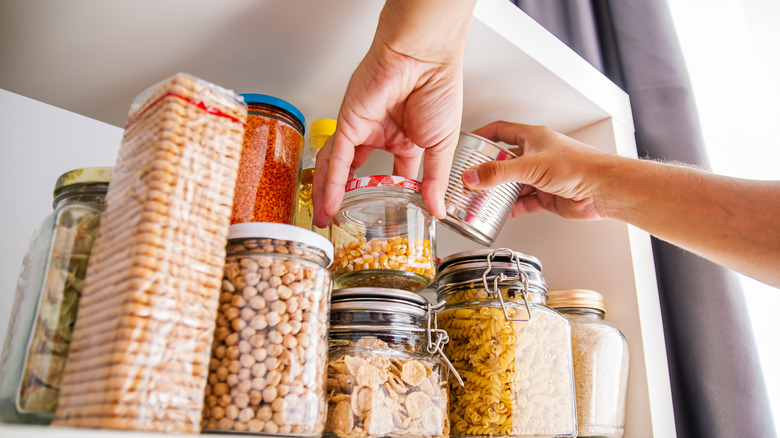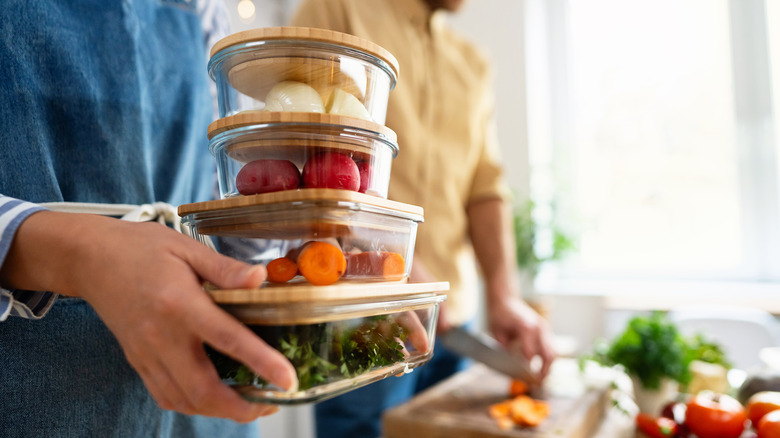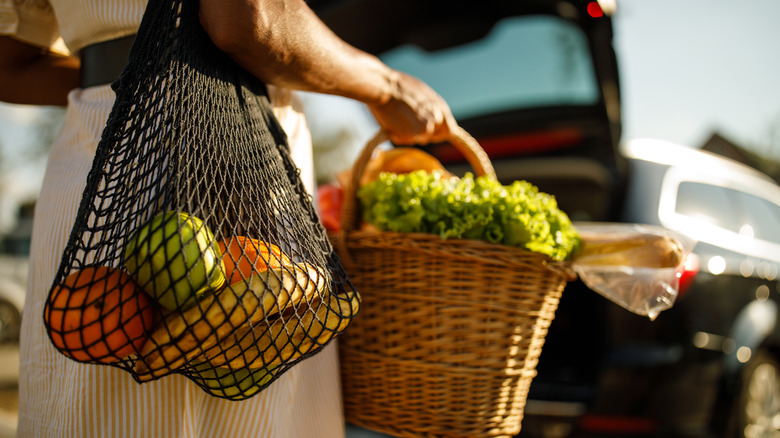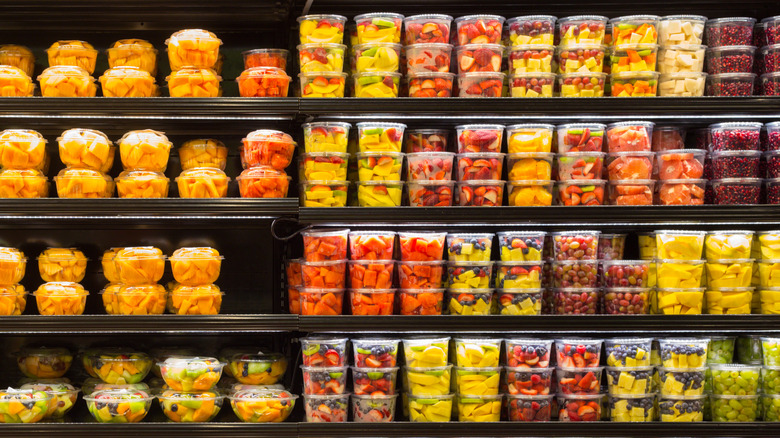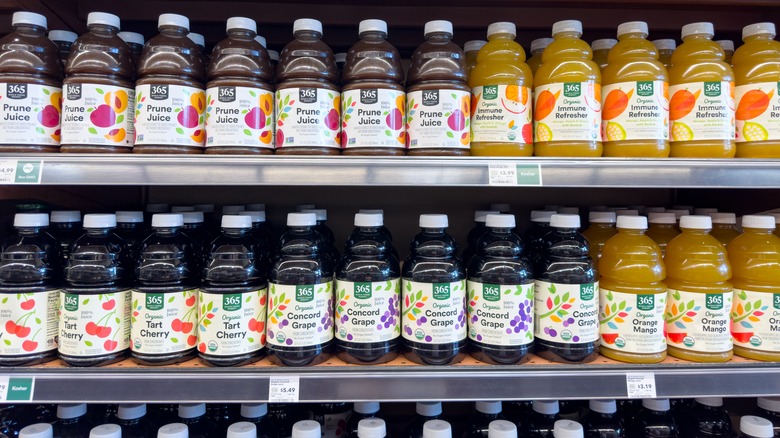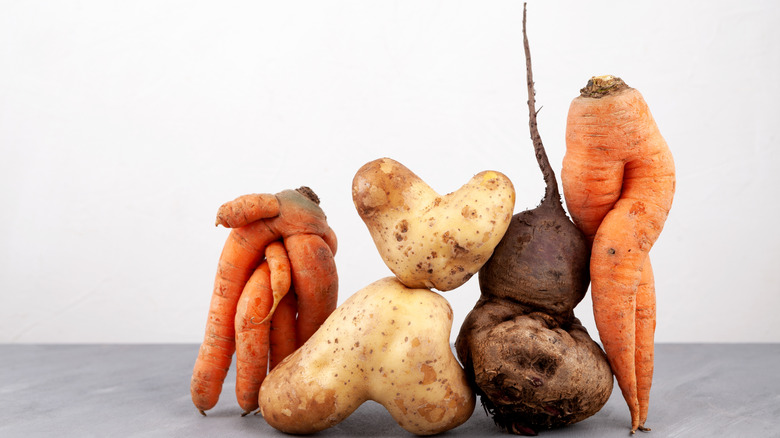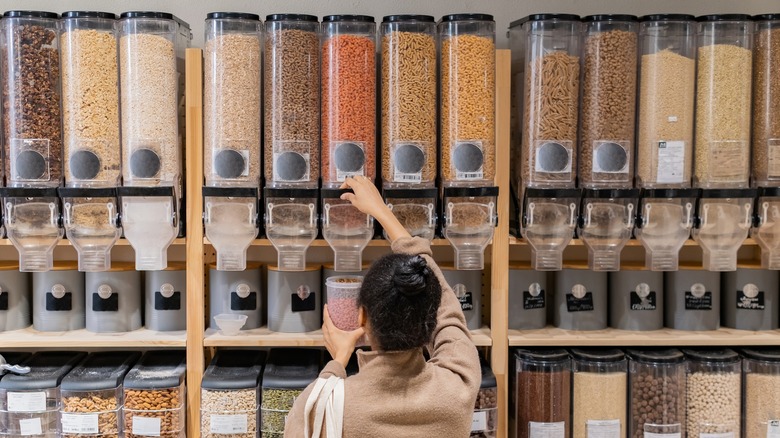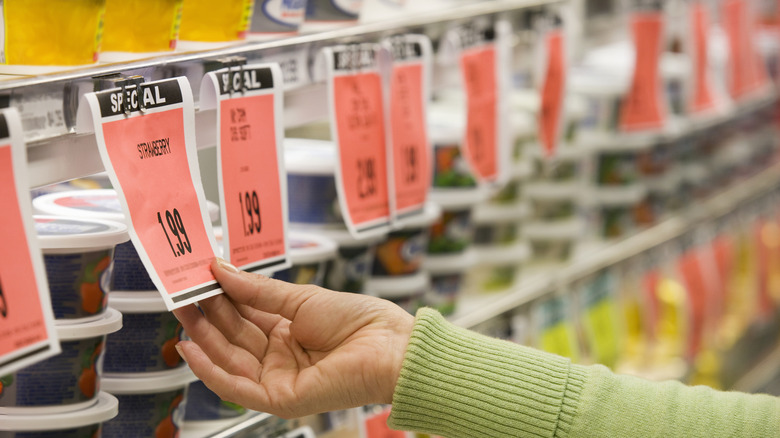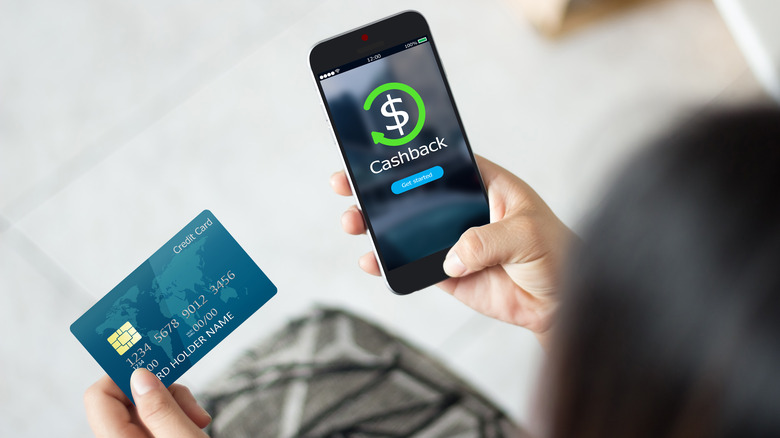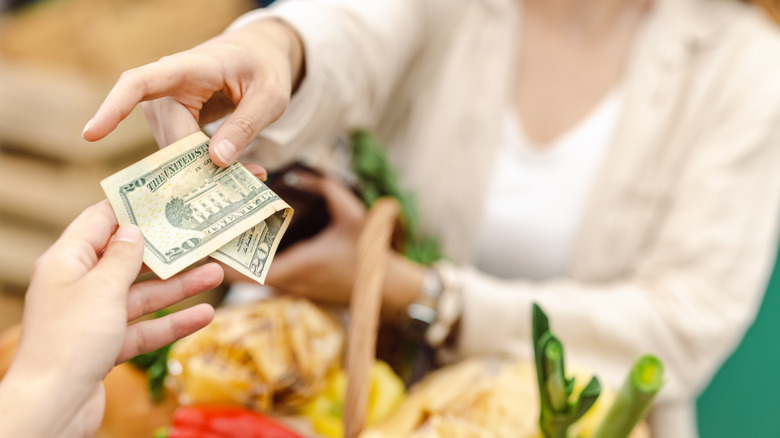20 Grocery Shopping Hacks To Save Money
These days, a trip to the grocery store can feel like a financial workout. You fill your cart, watch the total soar, and leave wondering how it all adds up so quickly. If you're tired of that sinking feeling, you're not alone. The truth is, every aisle is meticulously designed to encourage spending, but you can flip the script. By understanding the subtle tricks of the trade, you can transform shopping from a reactive chore into a proactive strategy.
Saving money on the essentials doesn't have to mean sacrifice or a stack of coupons. A few simple behavioral shifts can systematically dismantle an inflated grocery bill. It's the little things — the quick check of the pantry, the glance at the unit price, the planned leftovers, and knowing how to navigate a grocery store — that add up to real change. Consider this your guide to those small wins. A lighter grocery bill and a clearer conscience are closer than you think.
Write a strategic list
Forget relying on willpower alone. Your best defense at the grocery store is a simple, well-organized list. Research found that shoppers who used a list not only bought fewer unplanned items, but also tended to have healthier habits overall.
The trick is to write your list the right way. Keep a running list on your fridge where everyone can add items as they run out. Before shopping, organize it by category to match your store's layout (more on that later). This keeps you from zig-zagging through the aisles and running into all those tempting displays.
For maximum efficiency, use a digital template or a printable categorized list that you can refine each week. A strategic list keeps you focused, saves you money, and helps you stick to your plan. It's the simplest, most effective tool in your savings arsenal.
Scan your pantry
How many jars of cumin or boxes of pasta are hiding in your pantry? Before you shop, take a quick 30-second video of your pantry and fridge shelves. This simple act provides a perfect visual inventory, and it helps you only buy what you actually need.
For the ultimate system, organize your pantry like a pro. Ina Garten's method — grouping items by category with labels facing out — makes seeing what you have instant. Stack duplicates and keep like with like, transforming your shelves into a clear, navigable inventory.
Whether you use a simple shared note app or get inspired by communities like Reddit's r/foodhacks, the principle is key: A minute of prep at home leads to major savings at the store. Know what you have, and you'll only buy what you need.
Plan flexible meals
The secret to effective meal planning isn't complexity, it's flexibility. While creating a menu and budget are essential foundations, many people abandon the practice because it feels overwhelming. The solution? "Keep it simple and give yourself some grace," advises expert Nicole Farnsworth on how to build a smart meal plan. "Start with just three or four meals for the week and fill in the rest with leftovers or flexible nights."
This approach transforms meal planning from a stressful chore into a powerful money-saving strategy. Instead of locking yourself into specific recipes, build your list around adaptable theme nights like Taco Tuesday or Stir-Fry Friday. This framework lets you pivot to seasonal sales and what you already have on hand, while ensuring you only buy what you'll actually use. The result is a grocery cart filled with purpose, one that promises significant savings and culinary variety.
Use the 6-to-1 viral hack
Don't have time to draft a grocery list? Enter the 6-to-1 method, a TikTok-viral formula from chef Will Coleman that simplifies grocery shopping into a creative, waste-fighting mission. The rule is a simple countdown: pick up six vegetables, five fruits, four proteins, three starches, two sauces or spreads, and one fun item for yourself.
This framework is designed to build a balanced haul without a rigid meal plan. It prioritizes nutritious whole foods with the added bonus of a treat, making the process feel sustainable without restriction. Because you're buying versatile components rather than specific recipe ingredients, you're empowered to mix and match throughout the week, which helps reduce food waste. It's a flexible system that works at any store, turning a daunting chore into a quick, cost-effective game.
Shop once a week
Commit to one well-planned grocery trip per week. While popping in for "just a few things" is tempting, small trips to the store are a major budget killer. They consistently add up, both in extra spending and in unplanned items that find their way into your cart.
Adopt a simple routine: First, make sure your grocery list is in order by the time you're ready to shop. Next, designate one day a week as your shopping day. Take a cue from Google Maps, and consider a Wednesday evening: data shows it's typically the least crowded time. You'll be less flustered and can shop the new weekly specials that often start mid-week. Finally, execute your plan with a single, decisive trip to the store.
If you plan to visit multiple stores for the best deals, make certain they are located close together. Otherwise, the cost of time and gas can quickly erase any potential savings from sale items, undermining the entire purpose of your strategic shop.
Solo shopping is the way to go
It might seem like a small thing, but who you shop with has a direct impact on your total. Bringing a partner or children dramatically increases the likelihood of unplanned, budget-breaking items — like sugary cereals, snacks, or impulse buys from the end-caps — making their way into your cart.
Going to the store alone is a simple but powerful act of financial discipline. It allows you to maintain focus, stick strictly to your list, and make rational decisions without external pressure. While a family trip can feel fun, it often comes with a hidden companion tax. For the most cost-effective trip, make it a solo mission.
Go shopping on a full stomach
It's one of the oldest tricks in the book, and science confirms it: shopping while hungry is a surefire way to blow your budget. An empty stomach hijacks your brain, pushing it toward expensive, impulsive cravings for high-calorie, low-nutrition foods.
But the effect is even stranger. Research suggests that hunger doesn't just make you crave snacks; it triggers an acquisitive instinct to simply acquire more. This primal state can manifest as a bizarre, magnetic pull toward anything shiny or on sale, resulting in a haul that looks less like a well-planned shop and more like the contents of a culinary gadget drawer.
The defense is simple. Have a solid meal or a healthy snack before you walk in the door. It's the easiest way to ensure your cart is filled with what you actually need, not what your hungry brain momentarily desires.
The perimeter is your best friend
You've likely heard the advice to "shop the perimeter," and for good reason. This classic strategy works because grocery stores are deliberately designed this way. The outer aisles contain the foundational elements of real cooking: fresh produce, quality proteins, dairy, and baked goods. Focus your shopping here first, and you'll naturally fill your cart with nutritious whole foods that form the basis of healthy, cost-effective meals.
The center aisles, while necessary for some staples like olive oil and nut butters, are where processed foods and impulse buys lurk. When you prioritize the perimeter, you're making smarter financial choices. Save the inner aisles for specific items on your list, not for browsing. This simple shift in your route can transform both your health and your grocery budget.
Avoid eye level purchases
Here's a little secret every supermarket knows: We're lazy shoppers. We tend to grab what's right in front of our eyes because scanning every shelf is exhausting. That's why stores put the priciest, most profitable items exactly at your sightline.
The real treasure is hiding just outside that comfort zone. Make a point to look up at the top shelf and down to the very bottom. That's where you'll find the store brands, the bigger bags, and the simple packaging that costs significantly less. It's the easiest game of "I spy" you'll ever play, and the prize is real money back in your pocket.
Understand per unit pricing
That tiny number on the bottom of the shelf tag? That's the unit price, your secret weapon for outsmarting sneaky packaging and clever promotions. It tells you the true cost per roll of toilet paper, per gram of cheese, or per liter of detergent, cutting through the marketing noise.
Research shows that well over half of shoppers who use this trick save significant money. It's essential for spotting "shrinkflation," where the package shrinks but the price doesn't, and for revealing when bulk buys aren't actually a deal. Whether you're comparing a four-pack to an eight-pack, a fresh vegetable to its frozen counterpart, or prices between different stores, the unit price gives you the clarity to find the genuine bargain every single time.
Be aware of decoys
Ever find yourself drawn to the medium popcorn or the middle-priced bottle of wine? You've likely encountered the "decoy effect." This sly tactic involves placing a strategically poor-value item next to the product stores really want to sell, making the target item seem like a much better deal by comparison.
Here's how it works: A $5 bread seems expensive until you see a nearly identical "artisan" loaf for $8 placed right beside it. Suddenly, the $5 option feels reasonable. The decoy isn't meant to sell; it's meant to steer your choice. The best defense is to stick to the objective unit price and your pre-made list. Ask yourself, "Would I still choose this if the decoy wasn't there?" Recognizing this simple psychological nudge keeps you in control of your cart.
Limit pre-packaged items
Those containers of mixed berries and perfectly cut carrot sticks are the ultimate test of willpower. They promise convenience, but they deliver a massive markup for a few minutes of saved labor. The math is undeniable: A whole watermelon can cost half the price of a container of pre-cut cubes, and the fruit will stay fresher longer.
This principle applies across the board — from pre-shredded cheese to pre-chopped vegetables and marinated meats. By choosing whole ingredients, you're saving money and getting fresher, better-tasting food without the extra packaging. Keep this in mind: That convenience fee adds up fast. A little knife work at home keeps your wallet full and your meals tasting their best.
Shop store brands
That old idea that store brands are lower quality? It's a myth that's costing you real money. The simple truth is that many of your favorite national brands also produce the very same products for grocery store labels. You're often getting identical quality from the same factory, just without the fancy marketing and at a significantly lower price.
Making the switch to the store's version of staples like canned goods, pasta, dairy, and even frozen vegetables is one of the most effective ways to instantly cut your bill. Expect to save an easy 10% to 15% without sacrificing quality. Your wallet will notice the difference long before your taste buds will.
Buy imperfect produce
Forget the waxed, perfect-looking produce in the supermarket. For real savings, seek out the bins full of imperfect varieties — lumpy potatoes, two-legged carrots, and tomatoes with unique shapes. This bounty can be found at farmers markets, local fruit stands, or through subscription services dedicated to fighting food waste.
What's more, "ugly" fruits and vegetables are just as delicious and often half the price. The key is using them promptly. A great strategy is to buy discounted beauties and immediately chop and freeze anything that won't be used in a day or two. It's the ultimate win: saving a fortune, reducing food waste, and always having vegetables for a soup or fruits for smoothies.
Shop the season
One of the simplest ways to cut your grocery bill is to align your shopping with the seasons. When produce is at its peak abundance, prices naturally drop. This is for a few reasons: There isn't scarcity of the crop, since it's in season, and it didn't cost lots of money to ship the crop to your location from somewhere around the globe where it is in season.
While crop issues can occasionally disrupt this pattern, choosing seasonal items remains a reliable strategy for avoiding the premium cost of out of season imports. For even greater savings, seek out local sources like farmers markets, where the lack of shipping costs often translates to better value and quality.
Buy in bulk
Purchasing in bulk is a classic way to save, but the real trick is knowing what to stockpile. The goal is to build a strategic pantry free of clutter. Focus on non-perishable staples with a long shelf life that you regularly use, like rice, pasta, oats, and canned tomatoes. For savvy shoppers, this also includes freezable proteins and breads.
Remember, a "good deal" only saves money if you actually use the product. To maximize your haul, transfer items into clear, airtight containers. This not only saves precious shelf space but also keeps ingredients fresh and visible, preventing them from getting lost in the back of the pantry.
Schedule markdowns
The deepest discounts at the grocery store aren't advertised in a flyer; they're hidden in a predictable schedule. Those bright yellow tags on meat, bread, and dairy items nearing their sell-by date are your ticket to serious savings. The only trick is learning the rhythm.
Do as Redditors do: Just ask! Most butchers or produce managers will tell you exactly when they do their markdowns. For the best picks on meat and dairy, you'll often want to go first thing in the morning. For final clearances on deli items and baked goods, a late-afternoon trip can be a treasure hunt. Once you discover the schedule, you'll be grabbing high-quality steak, salmon, and artisan bread for pennies on the dollar.
Use loyalty cards
Supermarkets love loyalty programs because they turn occasional shoppers into regulars. In exchange for member-only prices and personalized deals, you provide valuable data about your shopping habits. If you're comfortable with that trade-off, scanning your card is non-negotiable. It instantly unlocks real sale prices throughout the store.
That said, not every chain operates this way. Aldi builds savings into its everyday prices, instead, proving you don't need a loyalty program for value. For most other stores, however, skipping the scan means paying a premium. The choice is yours: Share some data for immediate discounts, or seek out retailers who keep it simple. Either way, knowing how the game works puts you in control.
Stack your apps
Why use one discount when you can combine three? The modern art of "app stacking" systematically layers savings: first, clip digital coupons in your store's app; second, pay with a linked loyalty card at checkout; and third, scan your receipt into a cash-back app like Ibotta or Fetch.
This digital-age couponing does require some organization, but the payoff is real. Seasoned savers regularly report slashing 10% to 25% off their total bill. It turns your phone into a powerhouse of passive savings. While it takes more effort than a simple loyalty card, making this a weekly ritual can lead to serious cash back, transforming your grocery run into a strategic mission.
Pay in cash
There's a psychological wall that crumbles when you swipe a card. Spending becomes abstract, and it's easy to blow past your budget. But handing over physical cash? That triggers what behavioral economists call the "pain of paying," making you acutely aware of every dollar leaving your hand.
The system is simple: withdraw your set grocery budget in cash at the start of the week and leave your cards at home. When your envelope is empty, you're done shopping. This creates a tangible, foolproof boundary that a digital number on a screen simply can't match. It's a simple switch that forces conscious spending and makes your budget a physical reality.


